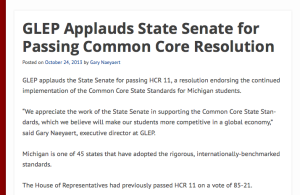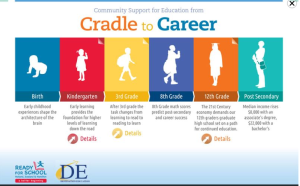A Georgia attorney’s open letter to Sen. Johnny Isakson
The following article is an open letter opinion piece submitted by Georgia attorney Jane Robbins. The views expressed below do not necessarily reflect those of AllOnGeorgia.
For years parents have fought the Common Core national standards, which have survived in Georgia under the misnomer “Georgia Standards of Excellence.” The resistance transcends the standards themselves and addresses also their underlying philosophy – that the purpose of education is to create a workforce, and schools should therefore train students in “skills” rather than academic knowledge. This workforce-development philosophy also holds that it’s never too early for the government to begin this training – preschoolers are fair game.
In questioning U.S. Secretary of Education nominee Betsy DeVos at her Senate hearing recently, Sen. Johnny Isakson adopted this children-as-widgets world view. Did Georgians who voted to re-elect the Senator in November realize they endorsed an ally of the statist progressive-education establishment?
There are numerous problems with the idea that education should be designed for workforce development. First, the practical problems – how does the government predict what jobs will exist and what skills they’ll require when students graduate? How does the government determine which students will be interested in which jobs and therefore will need what type of training, especially since many students don’t decide on a career until early adulthood? (Georgia seeks to solve that problem by nudging students toward a “career pathway” as early as grade 6, an approach of self-evident madness.)
Progressive statists also argue that the 21st century changes everything, that it’s now insufficient to give students the classical education – great literature, mathematics, history, science, art – that schools used to offer. But if that education was so deficient, how did men and women who received it go on to establish empires, create breathtaking works of art, generate untold societal wealth, and land on the moon? A student trained for a particular type of job will flounder if he heads in a different direction; a student with a genuine education will be equipped to take on anything.
More profoundly, the workforce-development model ignores that students are human beings, not cogs in a machine. It is, as Professor Anthony Esolen says, “a vision which is strictly utilitarian, man with the soul amputated.” But this is what Common Core and workforce-developers have imposed.
Nevertheless, policy-makers on both the left and the right have adopted this view — the left, perhaps, because such a scheme maximizes government power to operate a managed economy and control individual lives, and the right because Big Business promotes any “education” system that promises a pipeline of workers who have been trained on the taxpayers’ dime.
Whatever motivates Isakson’s position on this issue, here’s what he said to DeVos at the hearing (about 1:02:14 on the tape): “We have to come up with the programs necessary to train our kids to be able to do the jobs of the 21st century.”
Disturbingly, he made this statement in the context of discussing . . . preschool. He declared (at around 1:00:26) that he wants to “work towards requiring 4-year-old pre-kindergarten for every student in the country . . . .” It wasn’t clear if he meant requiring toddlers to be sent to preschool, or requiring states to offer such “early learning” to parents who want it.
But either interpretation is troubling. If the former, Isakson clearly isn’t familiar with the studies showing the ineffectiveness of or even harm done by taking little ones from their parents for hours every day. (Yes, some studies suggest otherwise, but experts such as pediatrician Dr. Karen Effrem have demonstrated why their conclusions are flawed. And even if the evidence is mixed, parents have the right to protect their children from any system that may not be in their best interests.) And if he merely meant the federal government should require states to offer preschool to willing participants, where is the federal authority to do that? The Constitution gives the federal government no role – none – in education policy, so Isakson’s suggestion that states should be “required” to do anything is anti-constitutional and therefore anti-conservative.
Isakson also extolled the benefits of using state money to pay for private but government-approved preschool. “If you get the private sector making an investment in public education and have seamless standards that everybody commits to,” government can turn every private provider into a government agency. Because what are those “seamless standards” the private preschools would have to adopt? Common Core – workforce-development for 4-year-olds.
Maybe Isakson simply hasn’t thought through his positions on education. That’s unfortunate, since he serves on the Senate committee that (unconstitutionally) guides education policy. Or maybe he has, in which case his claims of being a conservative are revealed as nonsense. Either way, Georgians lose.
Jane Robbins is an attorney and a senior fellow with the American Principles Project. She has crafted federal and state legislation designed to restore the constitutional autonomy of states and parents in education policy, and to protect the rights of religious freedom and conscience. She has published numerous works about these issues and has testified before the legislatures of eleven states. She is a graduate of Clemson University and the Harvard Law School.
Sent from my iPhone






